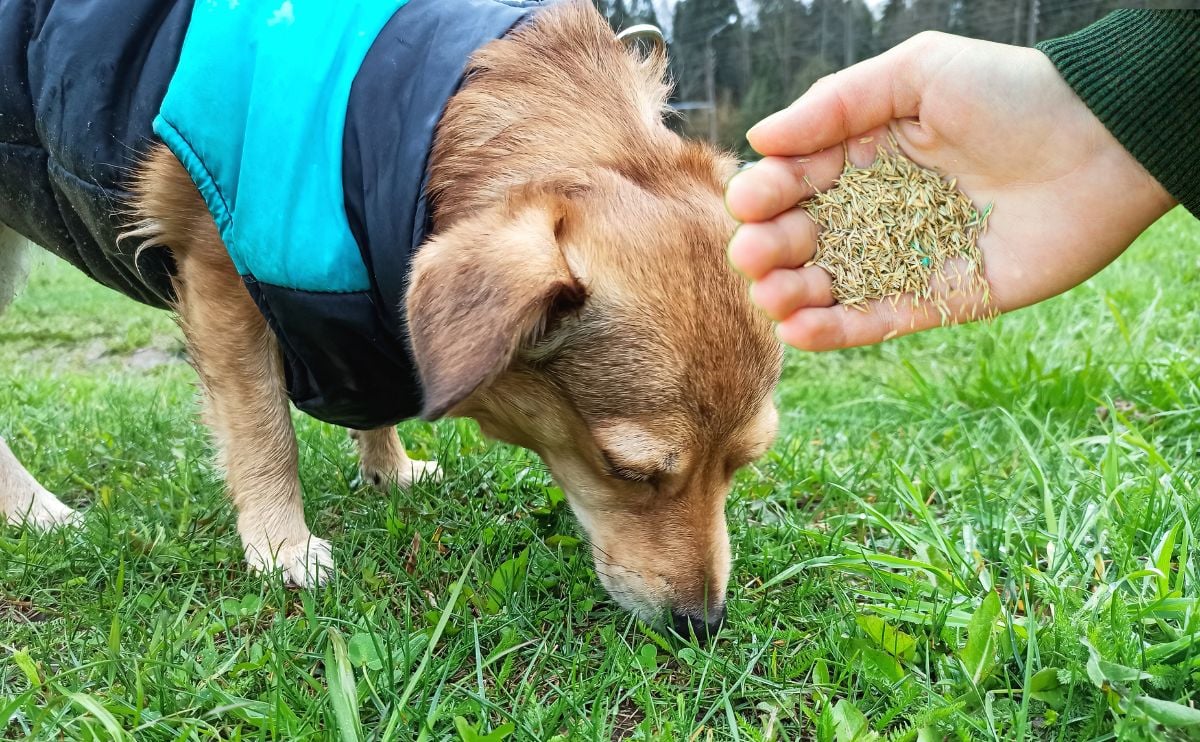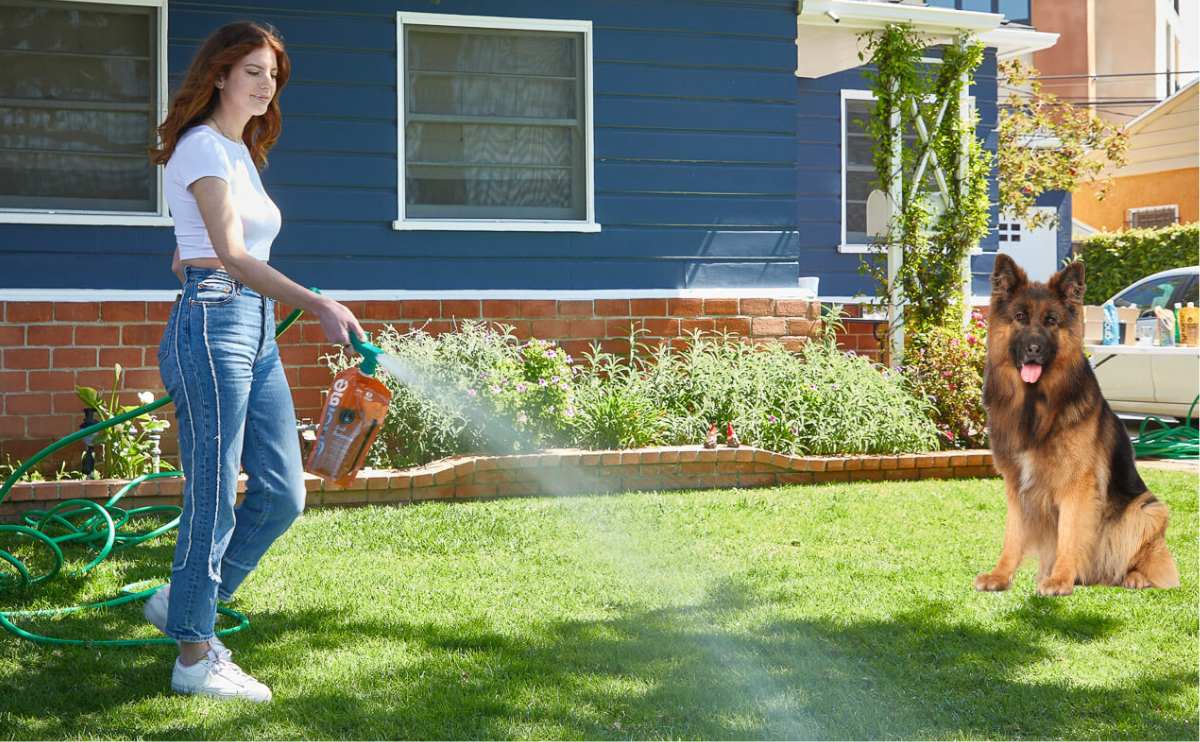When you purchase through links on our site, we may earn a commission. Here’s how it works.

More and more people are working from home full time. A study by Stanford University found that 42% of professionals were working from home in 2020. This figure may have been high due to the COVID-19 pandemic. However, the percentage of people working from home was trending upward before the outbreak. In 2017, 8 million Americans were already working from home full time.
Working from home requires a computer, a reliable internet connection, and any other tools of the trade that you might need. Peace and quiet are also essential for remote workers. If you have a dog, this may not be easy to achieve.
You may be frustrated when your dog barks during an important call or begs for a walk when you are in the middle of essential calculations, and you wouldn’t be alone. Nearly 39% of all households in the U.S. have at least one dog, adding up to more than 48 million homes with a canine.
How can all these at-home working professionals keep their pets from interrupting their productivity?
Issues Dog Parents Run Into When Working At Home
Work-from-home professionals with dogs usually have to deal with a similar set of issues. Here are the most common problems.
- The dog makes noise when you are on a call. Dogs may react to something they hear, see, or smell by barking. This is a natural reaction, but it can be frustrating when you are trying to maintain a professional image.
- The dog may get into trouble when you’re preoccupied with work. It might chew or eat something it isn’t supposed to or engage in some other dangerous activity while you aren’t watching. This is one reason why purchasing pet insurance is a good idea. Some plans also cover behavioral training, allowing you to deal with other work-from-home issues, as well.
- The dog’s needs may disrupt your schedule. Even a perfectly behaved pet will let you know when they need a walk, a drink, or food. It will not understand if you are “in the middle of something.”
- The dog might mess up your workspace. Whether because of the need for attention, boredom, or pent-up energy, dogs come into your home office area and knock over or disconnect something.
With proper planning, you can avoid many, if not nearly all, of these issues.
Why It’s Important To Change Your Dog’s Behavior
Behavioral problems will persist unless you change your dog’s behavior. Here are eight ways you can accomplish this.
1. Take Ownership Of Your Space
You consider your dog a member of the family. Like the humans in the household, your dog typically is free to go where they choose. In most cases, this is perfectly fine, but if you need personal space during work, it can be a challenge.
Your dog might not understand your work schedule, but you can train it to learn that your office is off-limits. The key is to be consistent and not let the dog in, even during evenings or weekends.
Puppies may not understand such boundaries. However, you can take steps to puppy-proof your house. A gate, for example, can keep the young dog from entering your office (or any other room) in the home that you want to keep off-limits.
2. Designate A Dog Spot
You can designate a workspace for yourself, but you can also give your dog a special place. The Humane Society suggests finding a quiet space, one without carpeting, away from foot traffic, and direct sunlight. The temperature should always be consistent (and the area should be within the climate-controlled part of the house).
You can use positive reinforcement (with treats) to teach the dog to go to their place and remain there. You want it to feel safe and not associate the place with being punished, which is why a positive approach works better. You can use cues such as “bed” or “place” to send them to their spot. Words like “free” or “release” can tell the dog they can move around the house again.
3. Create Routine
A routine is helpful for both you and your dog. Even if you are not on a strict schedule, giving structure to the day can keep the dog from getting stressed, missing a meal, or becoming bored from inactivity.
Puppies need to eat three or four times per day, and older dogs eat twice, eight to 10 hours apart. They generally need to go outside to relieve themselves 15 or so minutes after eating. You can build the rest of the day’s routine around these two essential times.
You can get your dog to conform to your work schedule. For example, you could walk them during a coffee break or lunch break. Dogs need a total of 30 to 120 minutes of physical activity per day, depending on the breed and age. Dividing this time into several shorter sessions during your regular work break times can help keep the dog active and engaged so they do not get bored and interrupt you.
4. Have A Backup Plan
Routines are not always possible; an unexpected Zoom call could cause you to miss the daily afternoon walk, or an important project could have you working later than usual. When these events happen, it’s best to have a backup plan for keeping the dog occupied while you work.
Such alternatives could include reserving a new toy so that the dog has something novel to play with while you take care of your work duties. Instead of purchasing new toys, you can rotate existing toys and reintroduce them during missed activity periods.
If possible, rely on other household members to handle the walking duties when you are unavailable.
5. Go For Walks
The National Alliance on Mental Health (NAMI) encourages regular breaks and movement-based activities for work-from-home professionals. These steps promote mental health when working at home in an otherwise isolated environment and are also beneficial in an office setting. Dogs need up to two hours of exercise per day, so walks can benefit both you and your pet simultaneously.
If a longer walk is not possible because of your work schedule, break the day up with multiple shorter outings. You can also have alternative indoor activities — such as tug-of-war, fetch, or another active game — for those days when the weather does not allow you to venture outdoors.
6. Invest In The Right Toys
Dogs do not need you to entertain them. Though your pet can’t safely take itself for a walk, it can play alone if given the right resources. Dogs willingly engage in solo play using noise-making, chew, treat, or puzzle toys. But never leave your dog unattended with a toy in case it starts breaking down, creating a safety hazard.
- Noise-making toys squeak or make some other noise when the dog chews on them or moves them.
- Chew toys, such as rawhide-alternative bones, provide a safe way for dogs to exercise their jaws and satisfy the natural urge to chew.
- Treat and puzzle toys have hidden compartments where you can place your dog’s favorite snack. They typically need to work to get to the food, providing both mental and physical stimulation.
It may take some trial and error to find toys that your dog enjoys. However, once you find them, you can create a toy rotation that will help keep your dog occupied while you work.
7. Practice Obedience And Mental Stimulation
Dogs get mental stimulation in several ways. As an owner, you should seek out games, puzzles, and activities that help your pet develop its brain in a way that makes behavioral training easier.
The goal of these activities is positive reinforcement, which helps the dog associate good behavior and activity with rewards. The puppy will complete these games and learn to associate specific actions with rewards. You can easily move on to obedience training using the same positive reinforcement techniques.
8. Seek Help From A Dog Behaviorist
You can also seek help from a dog behaviorist if your pet continues to create problems during your workday. Some dogs may have learned behaviors that make it impossible to remain quiet and entertained while you work from home. Or perhaps there is a negative habit that you unwittingly developed in the animal. A behaviorist will help you define the problem and help you train (or retrain) the dog.
Luckily, in addition to paying for veterinary care, some pet health insurance plans cover behaviorist visits.
With these tips, you can keep your pets from interrupting your workday. But what should you do if your employer returns to in-person workdays? If your dog becomes used to seeing you every day, you may need to deal with separation anxiety. This may require additional training and another visit to the dog behaviorist.
Tagged With:

